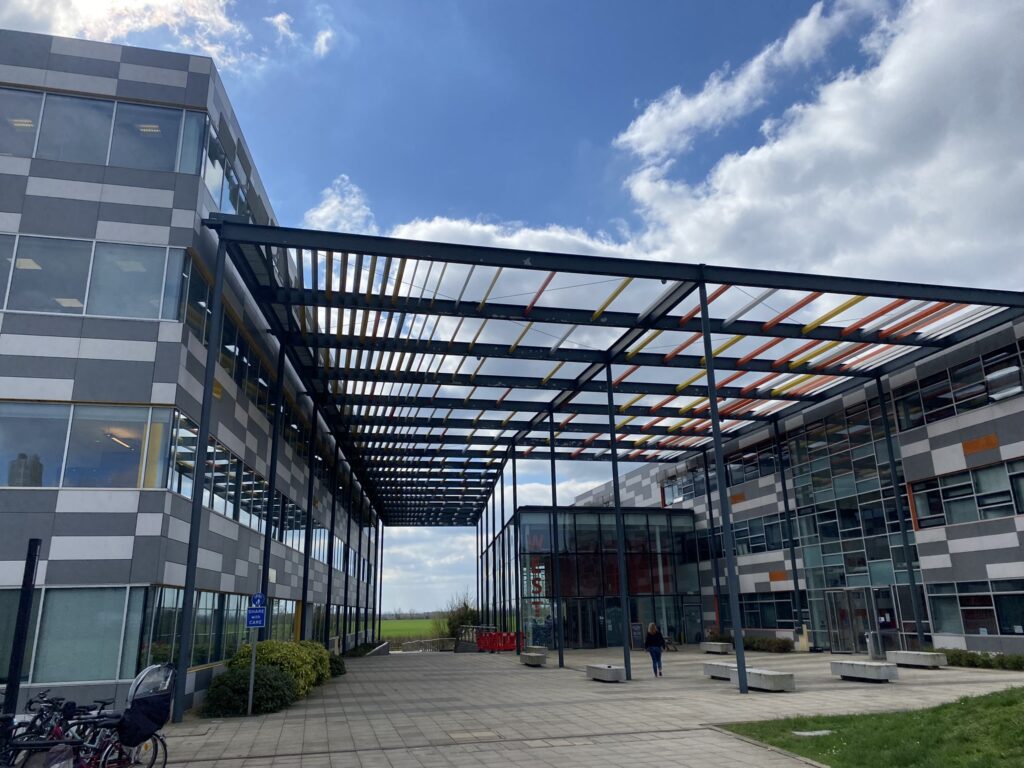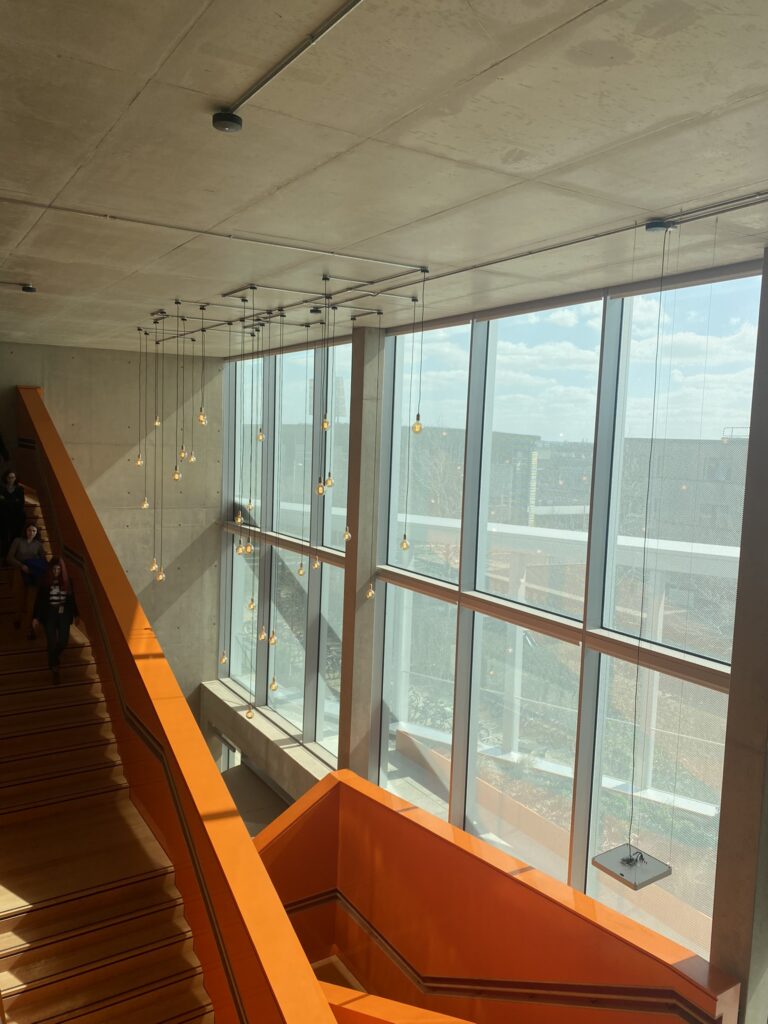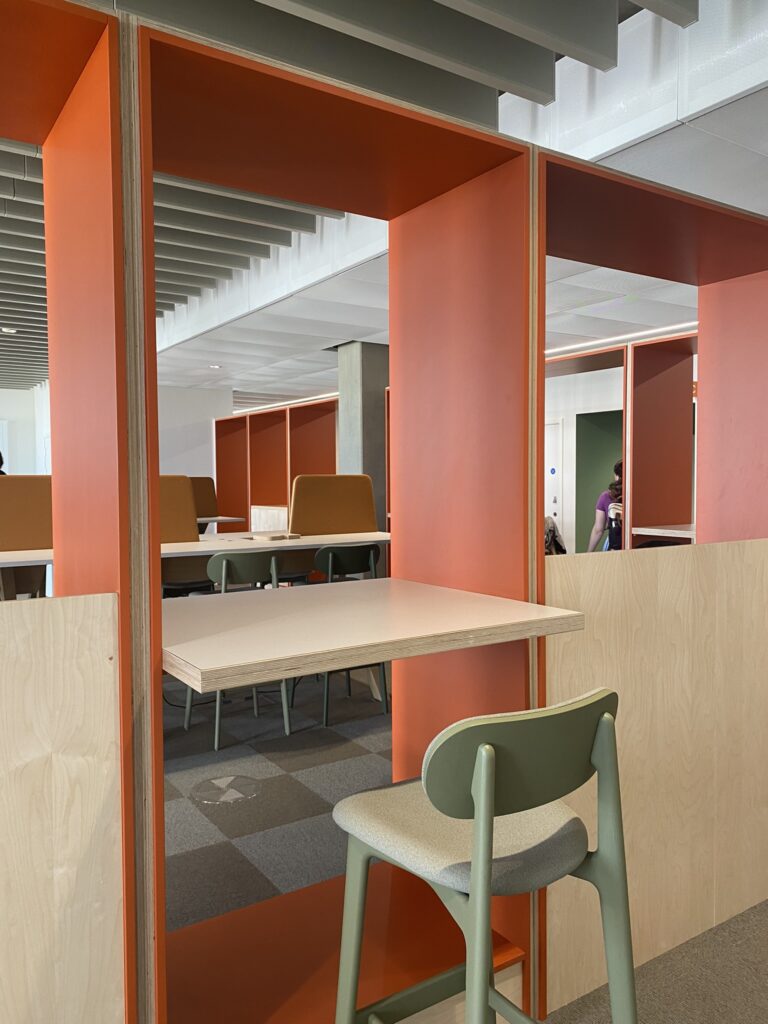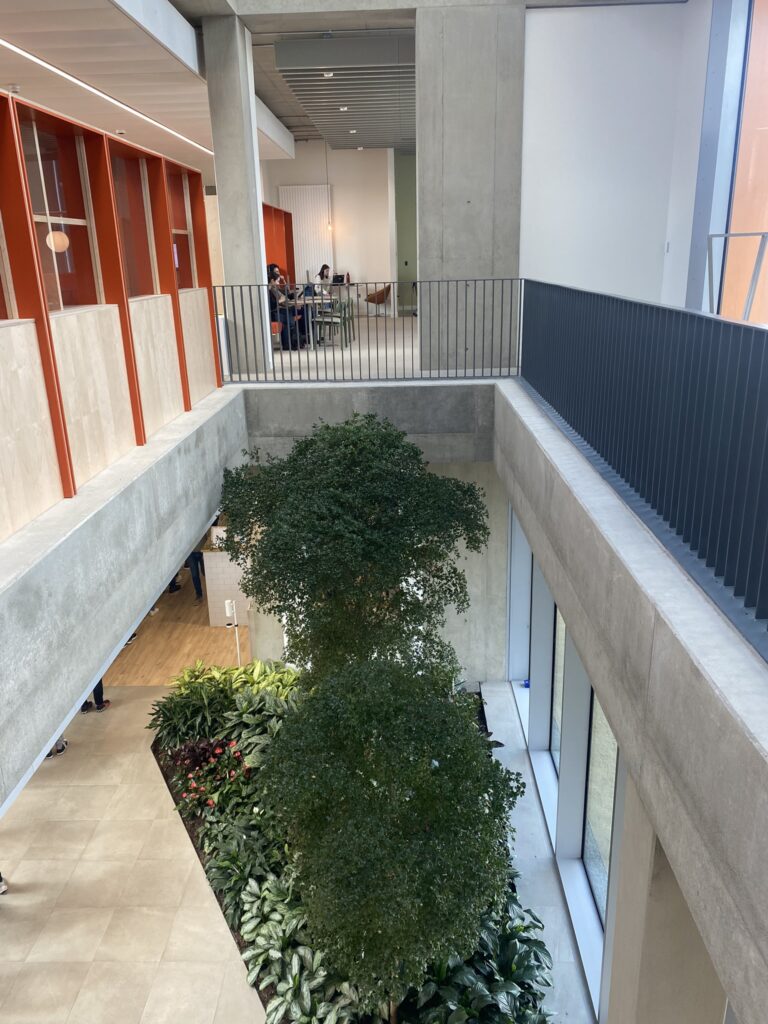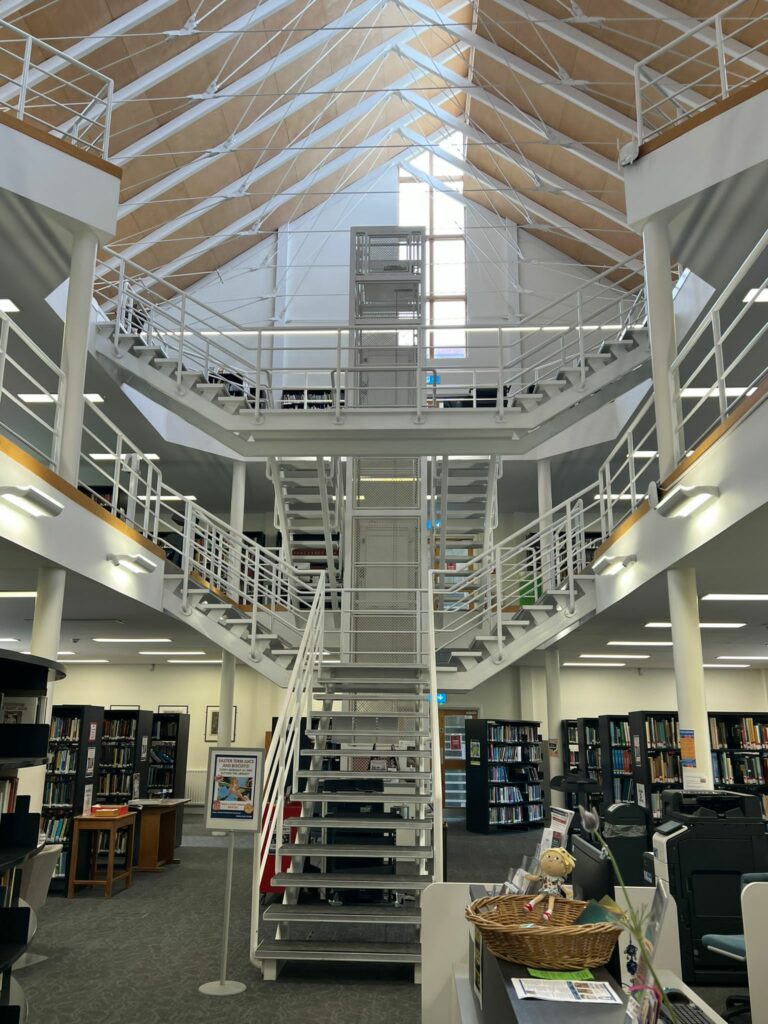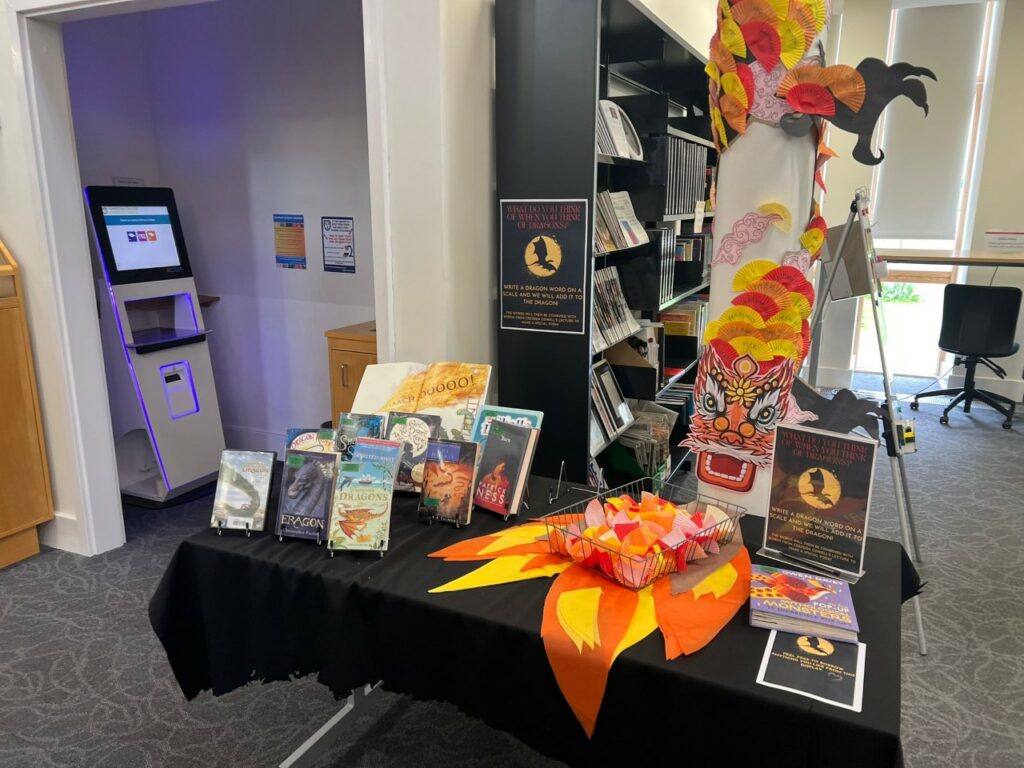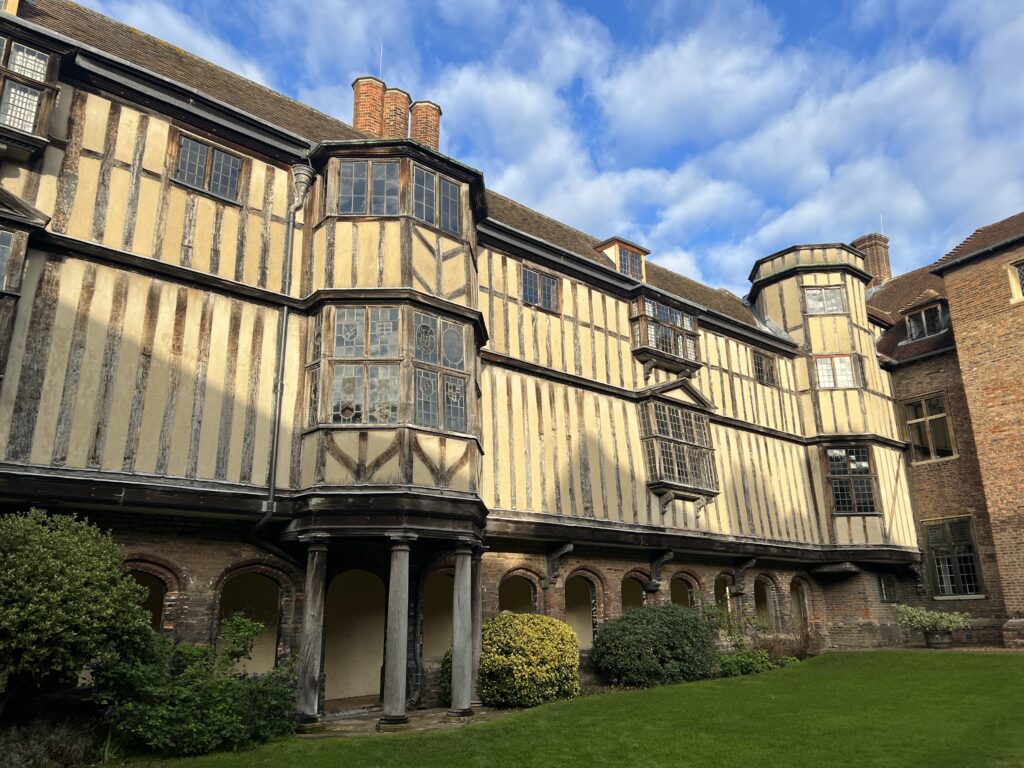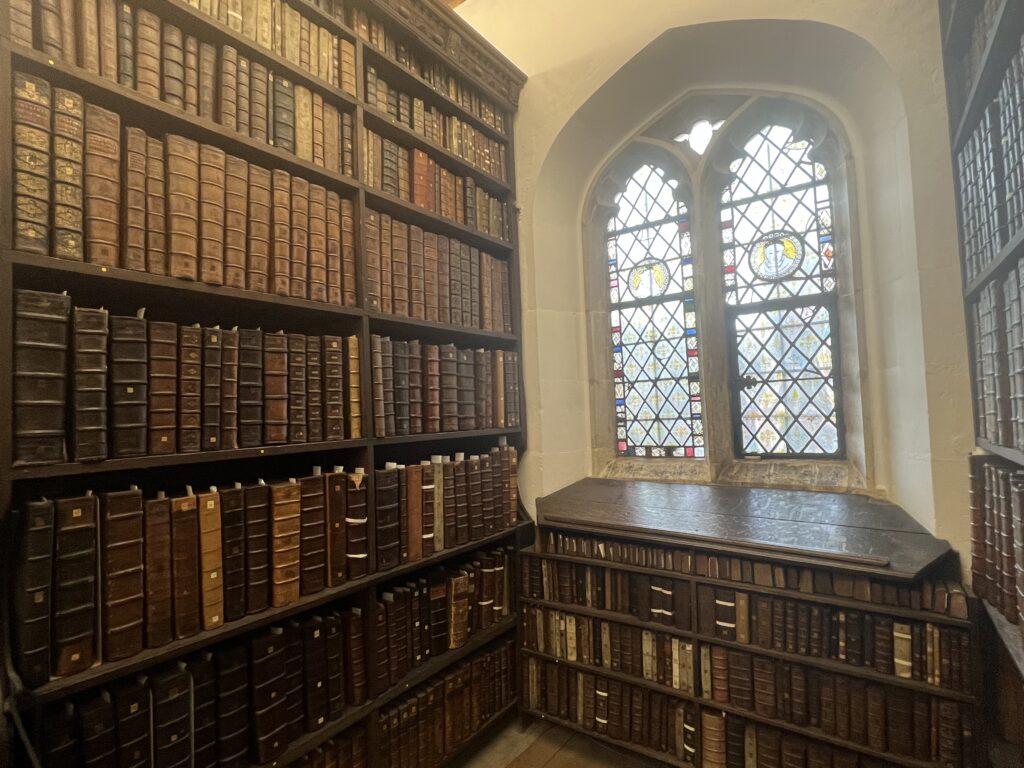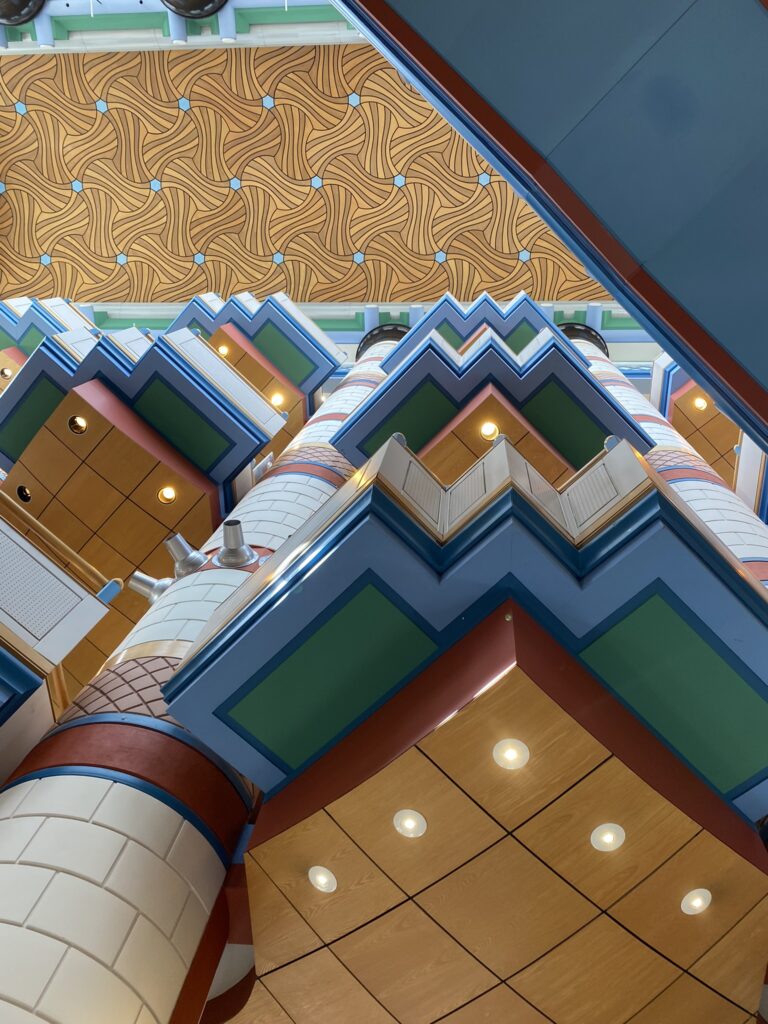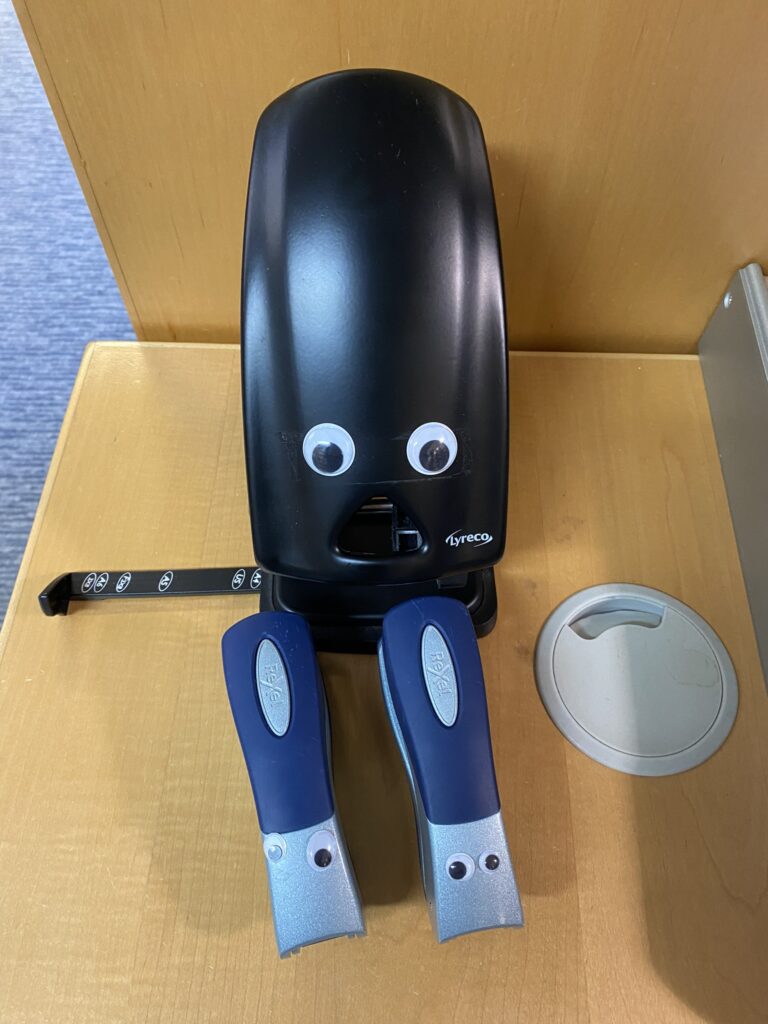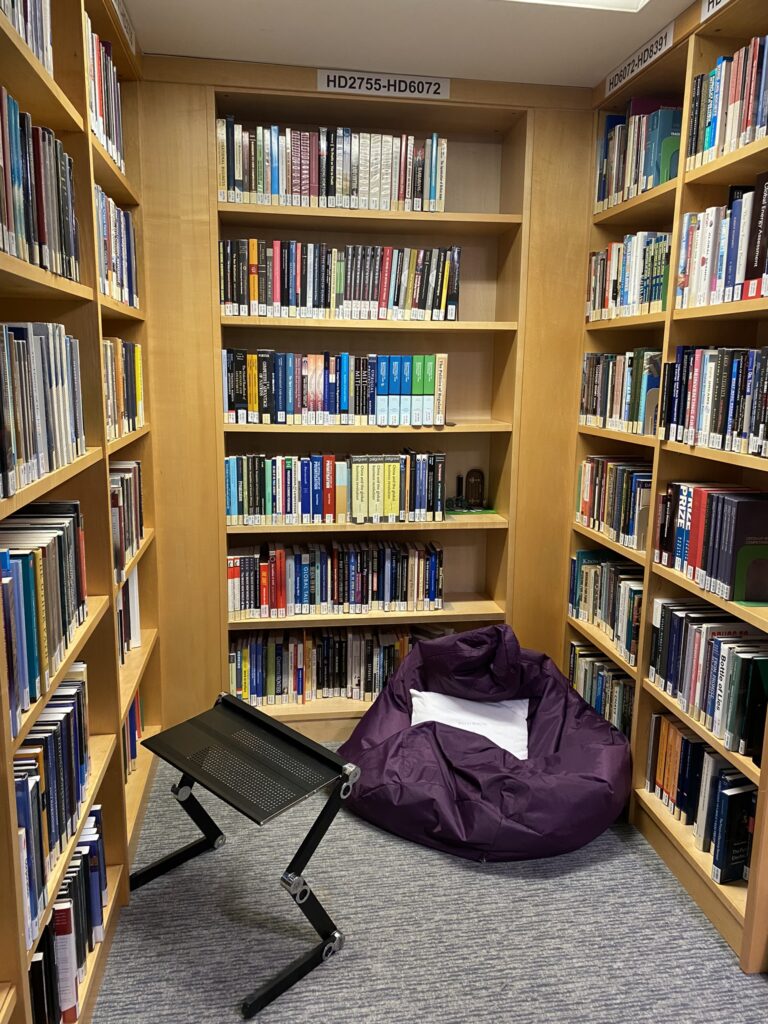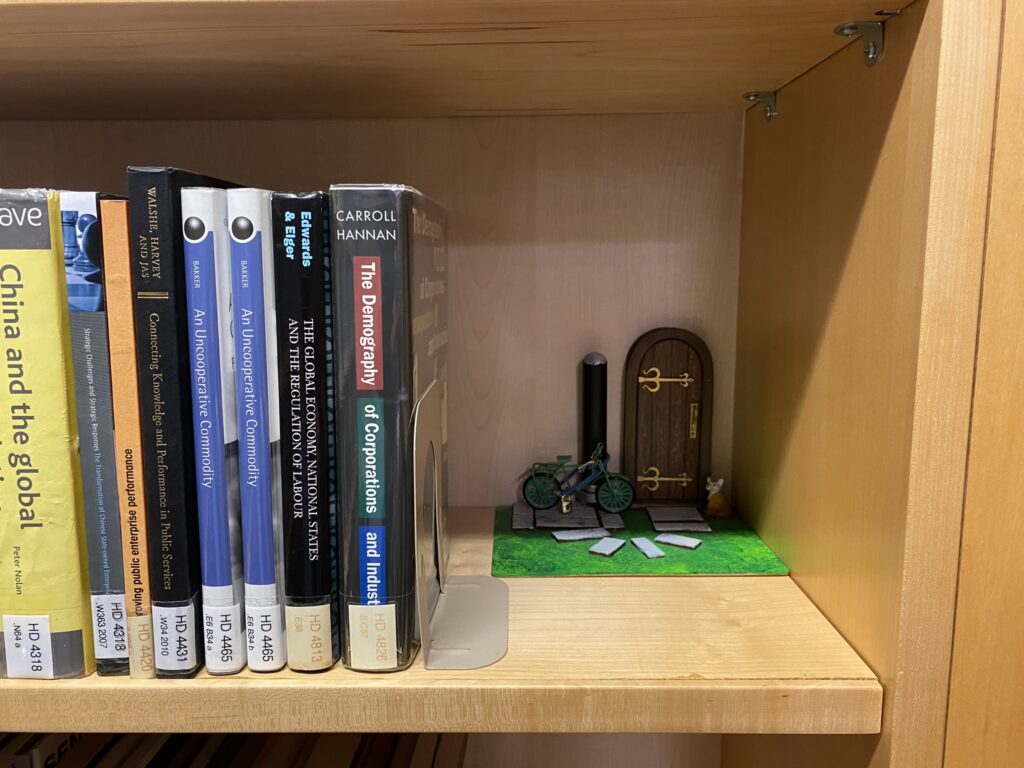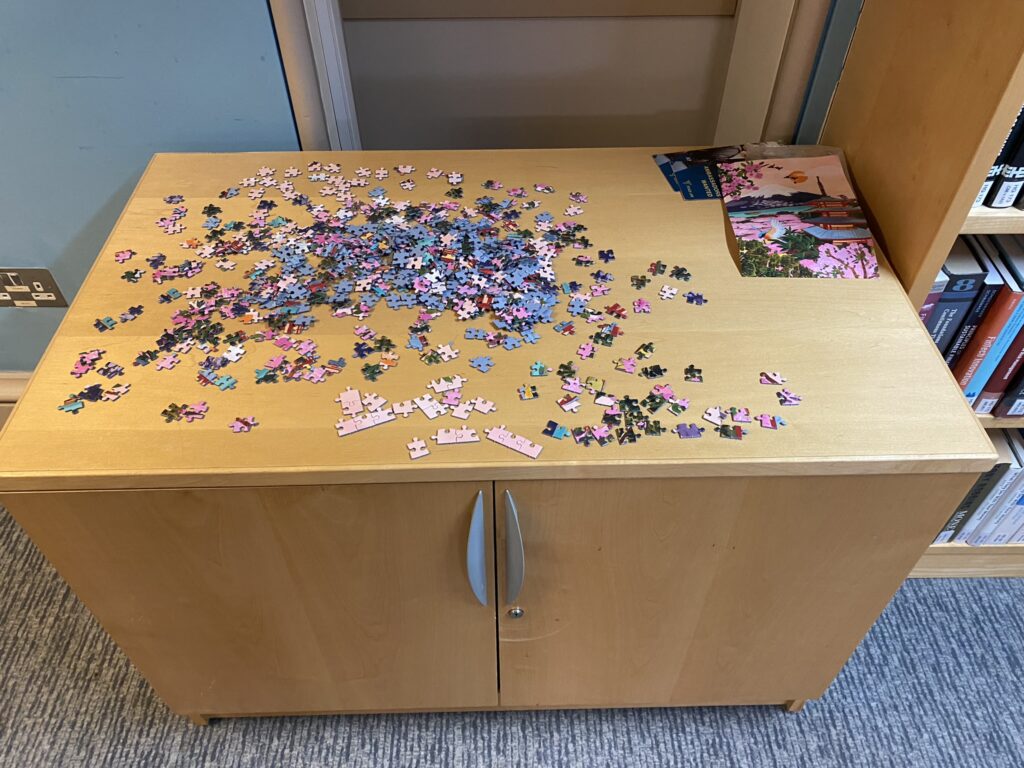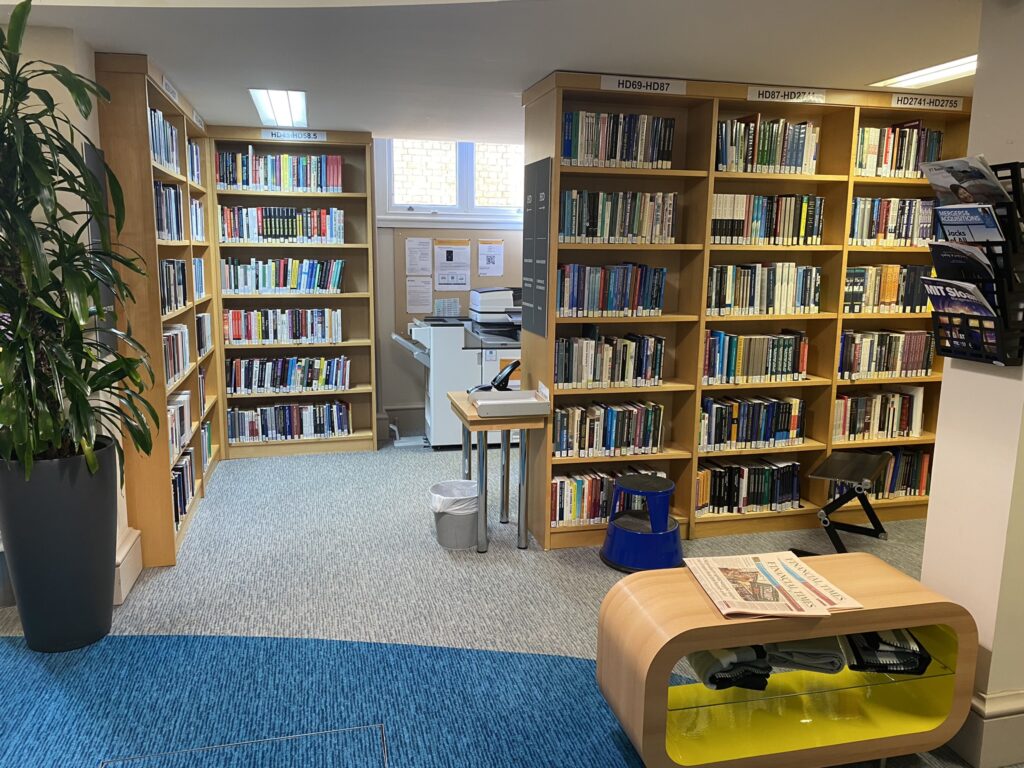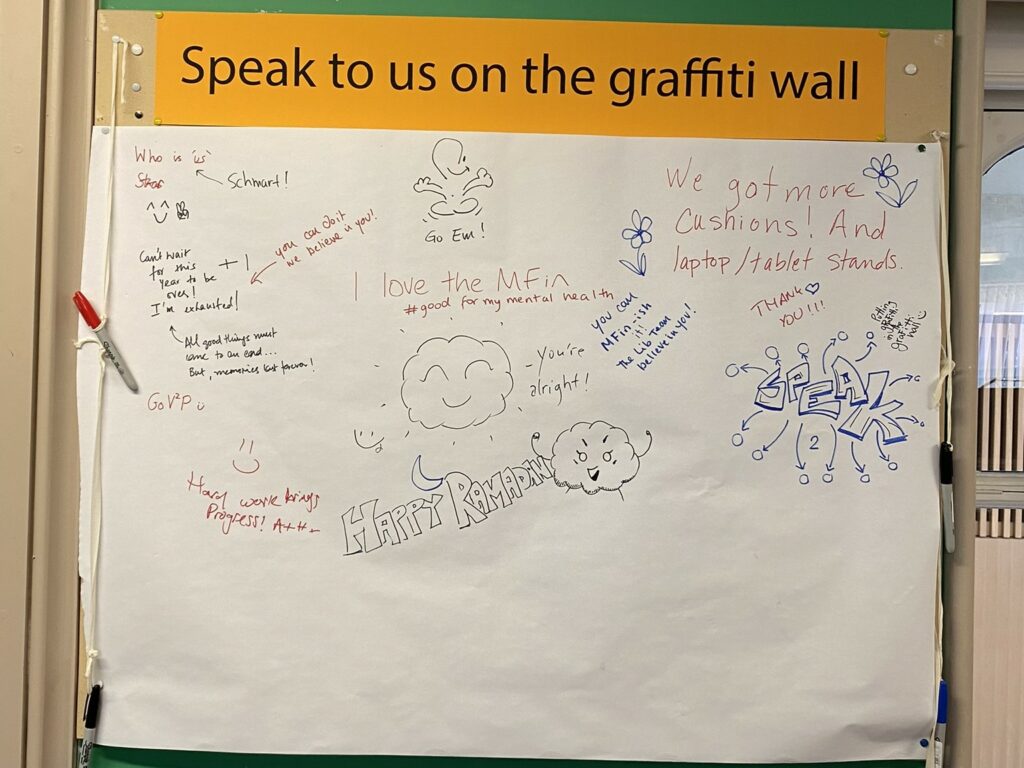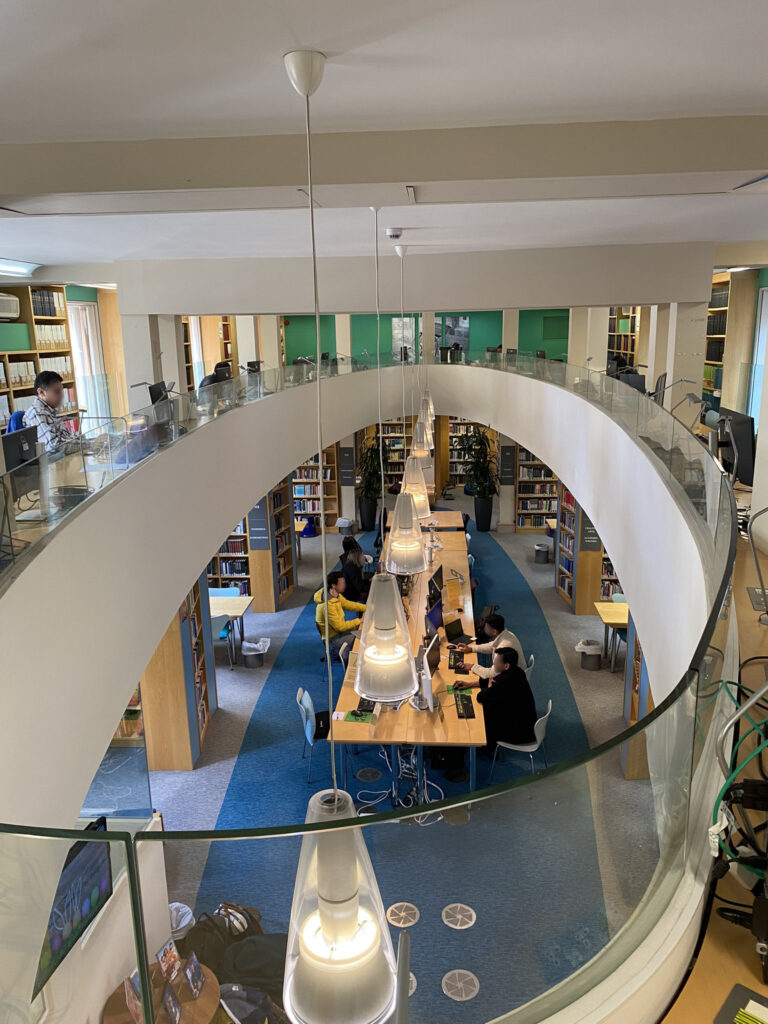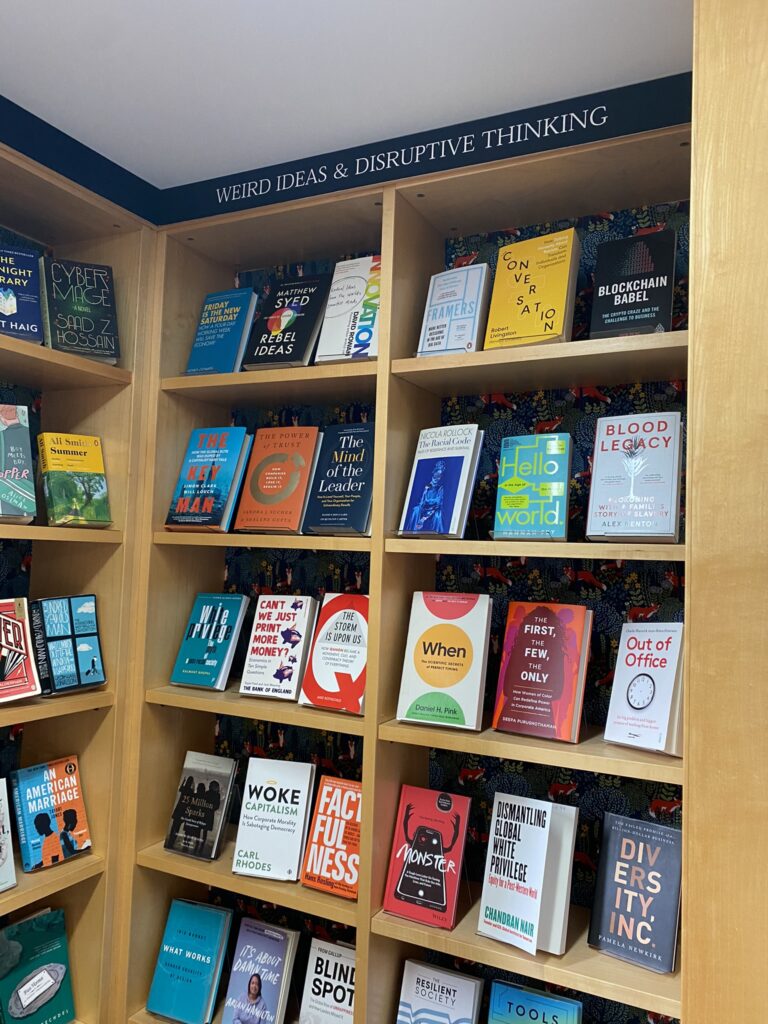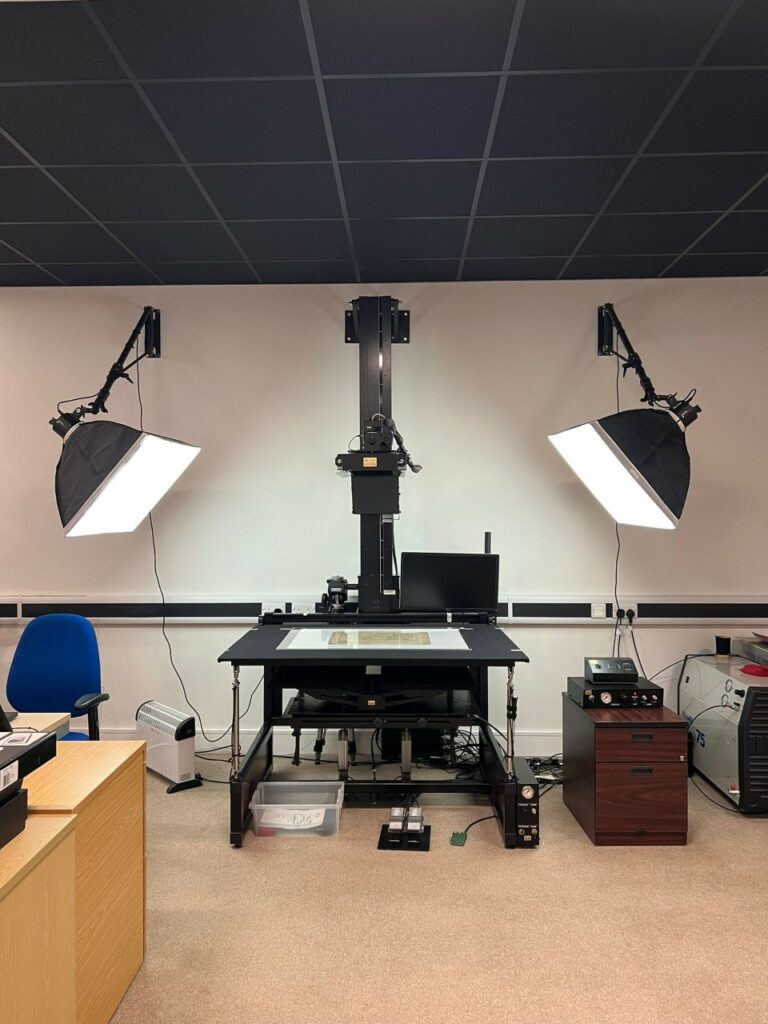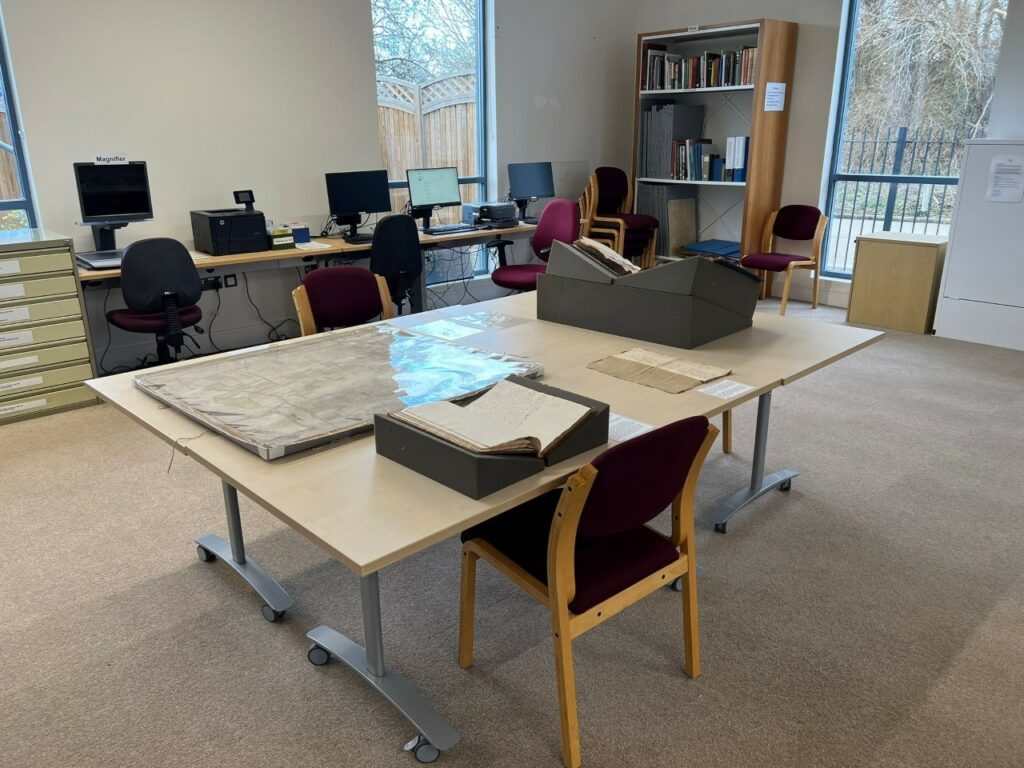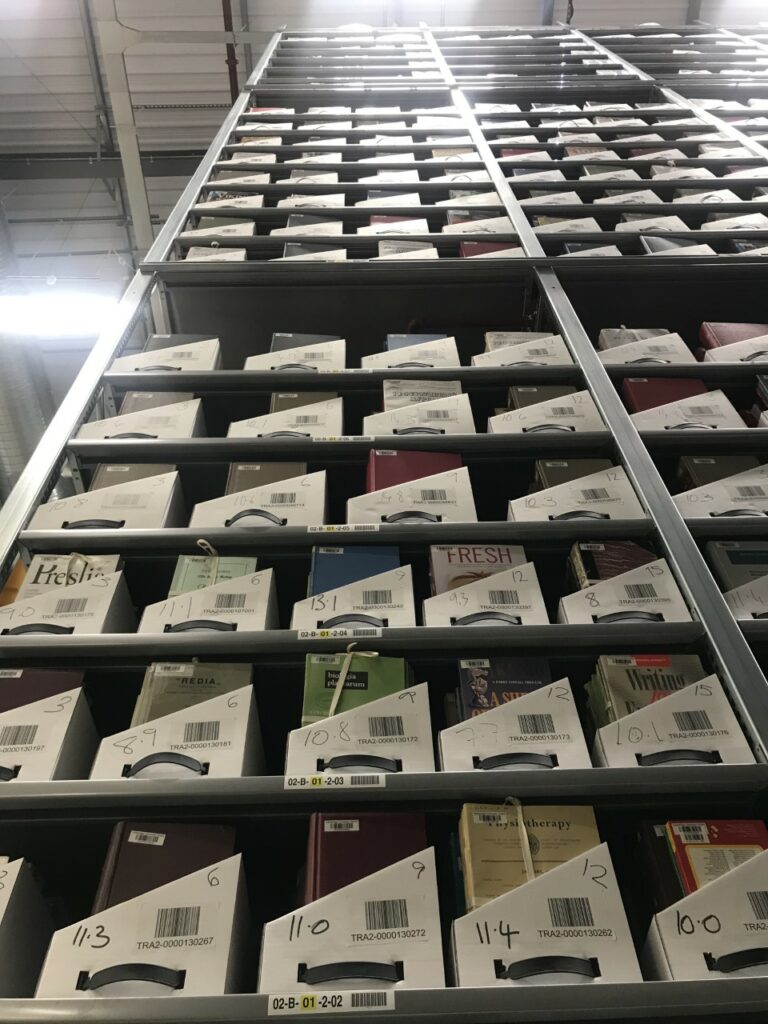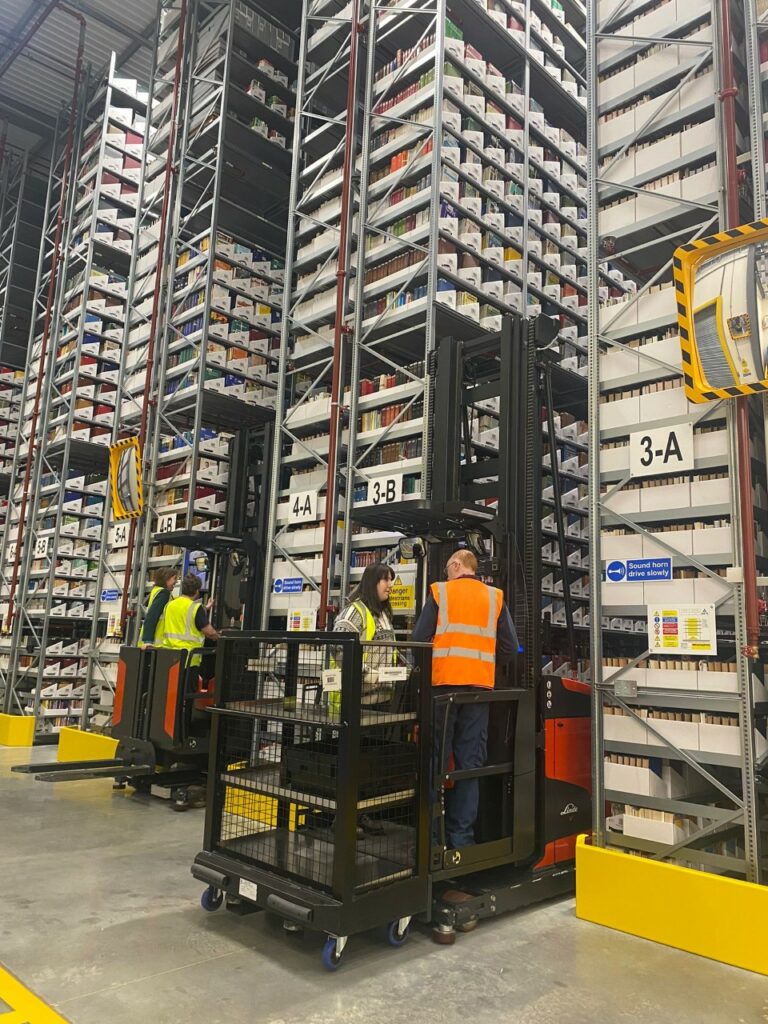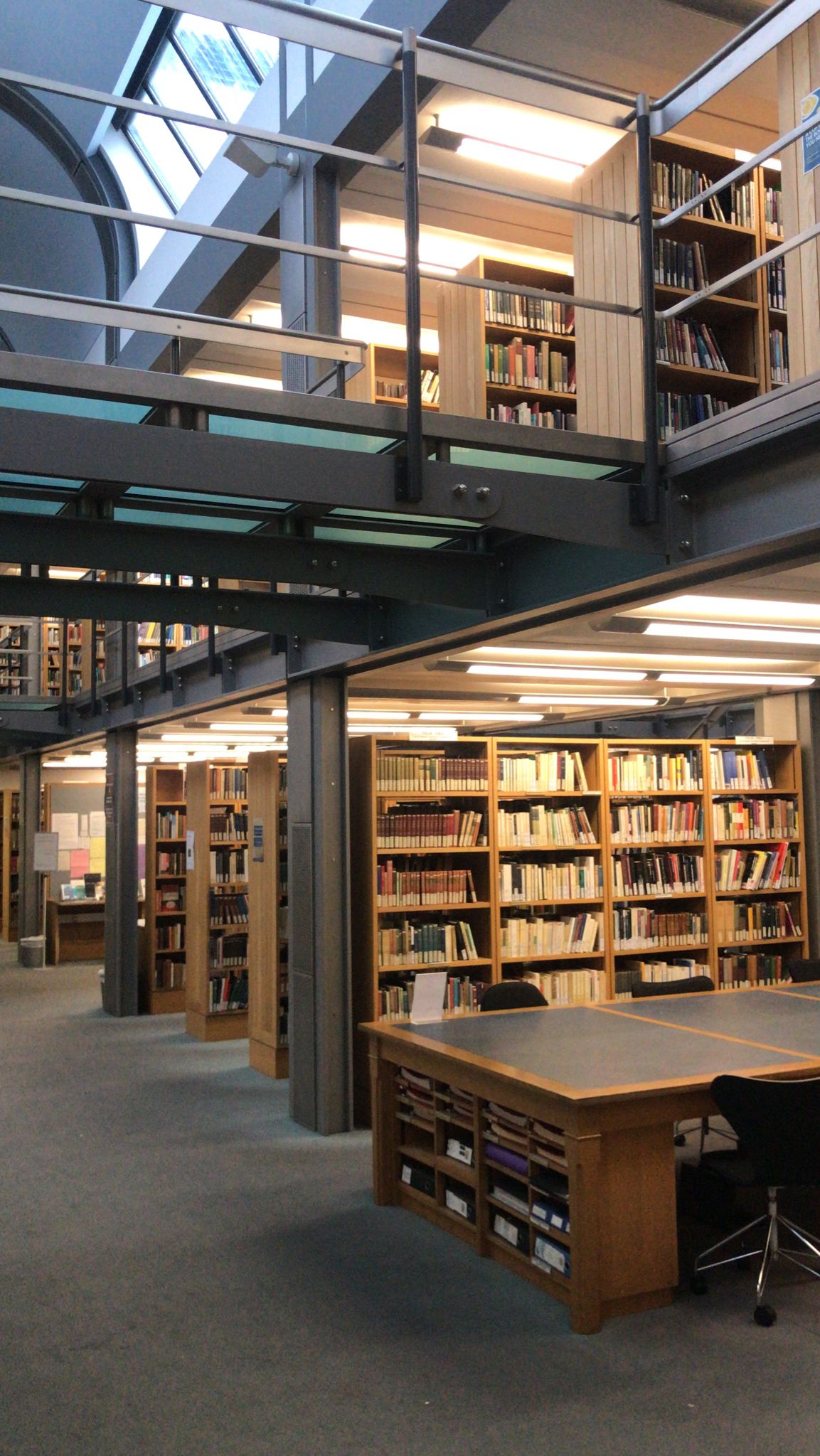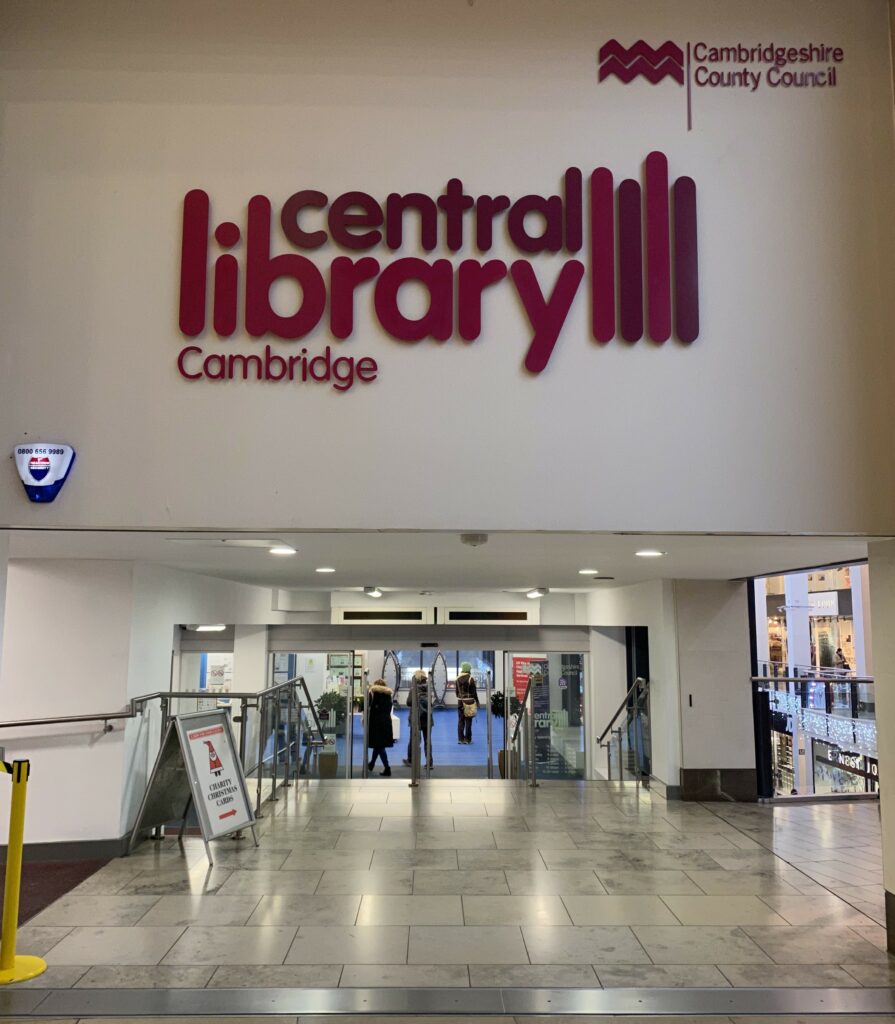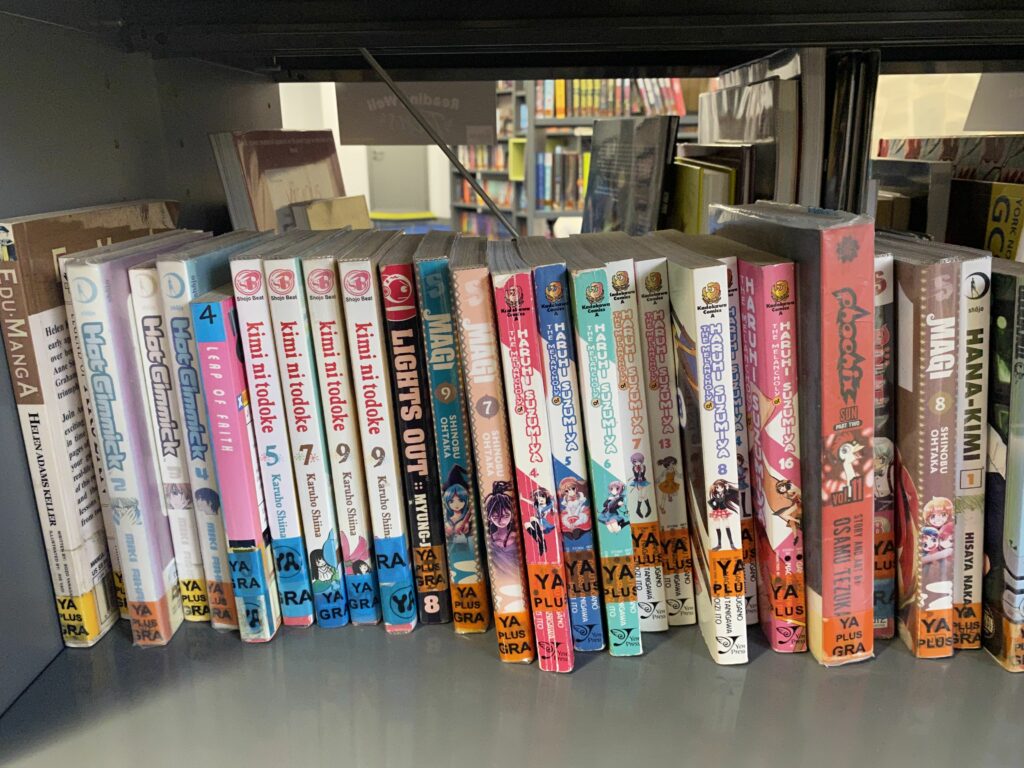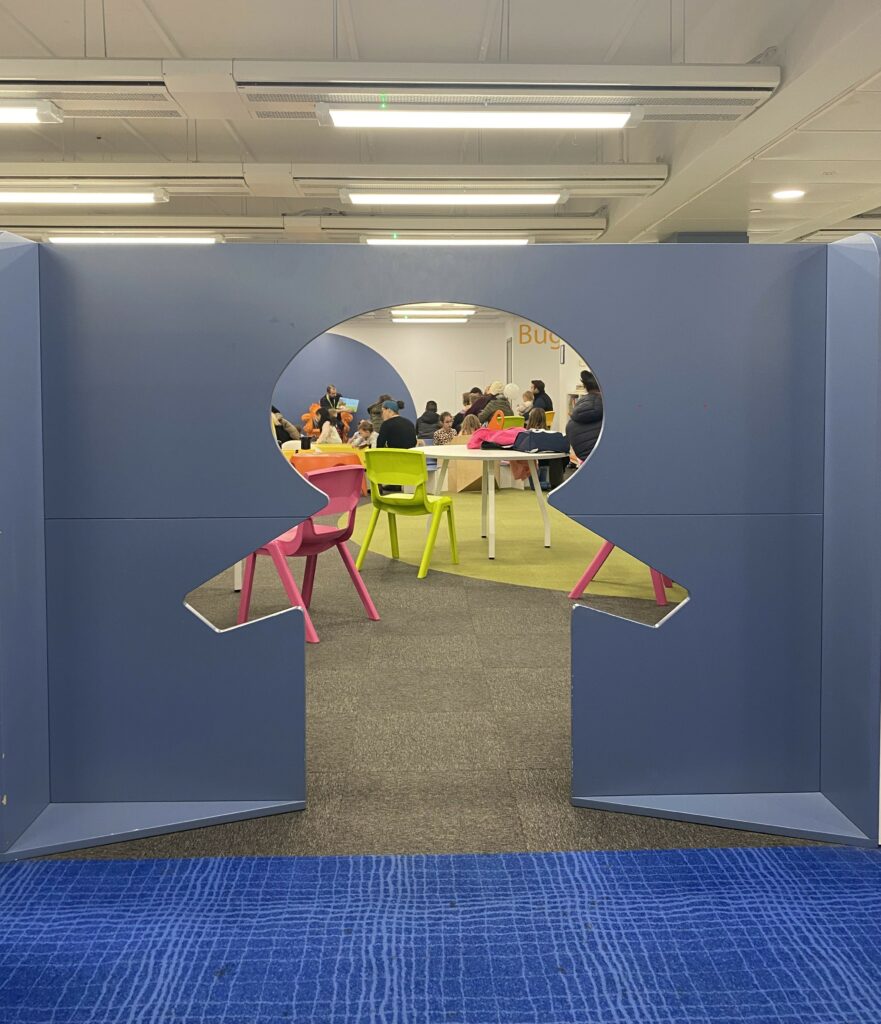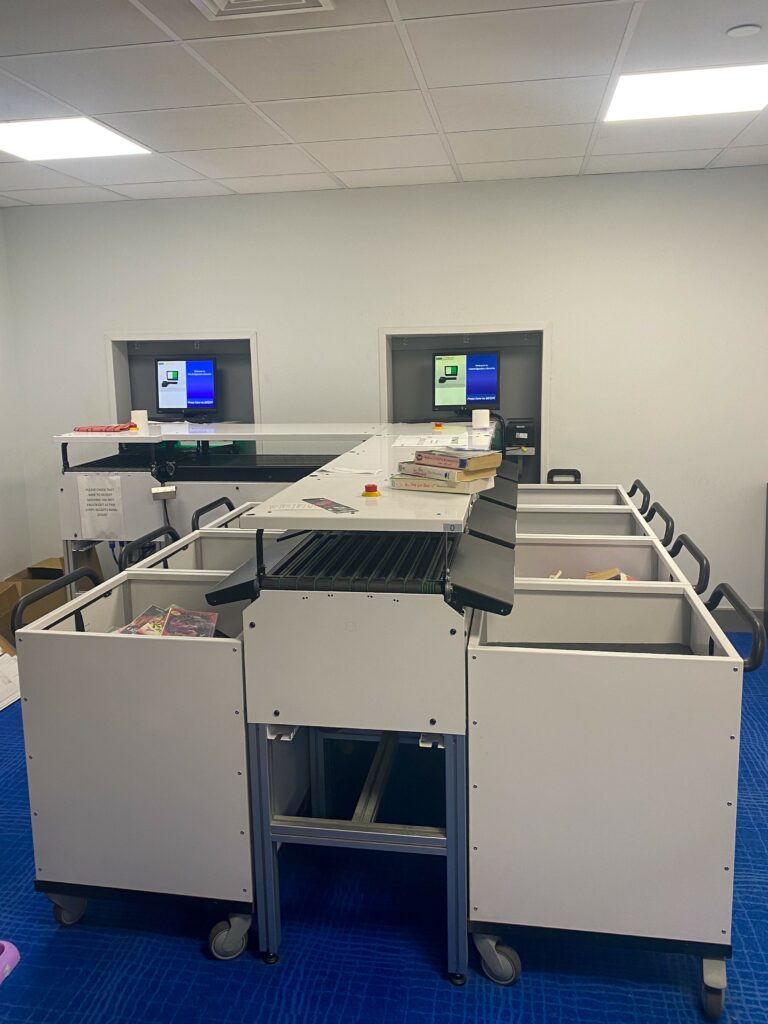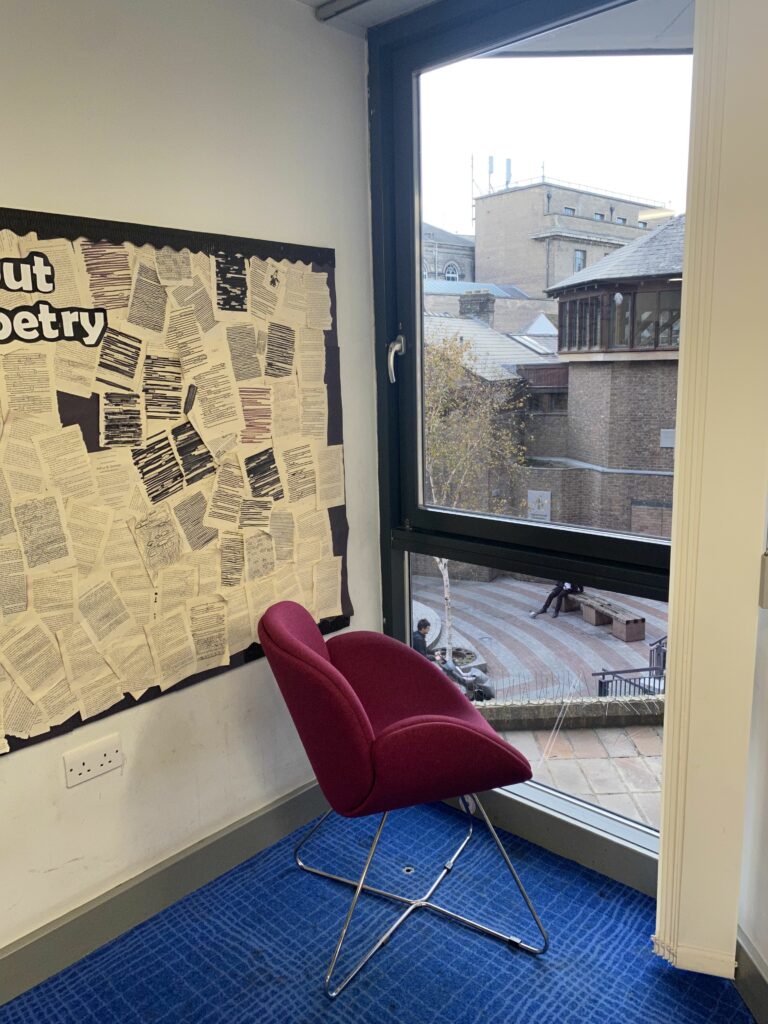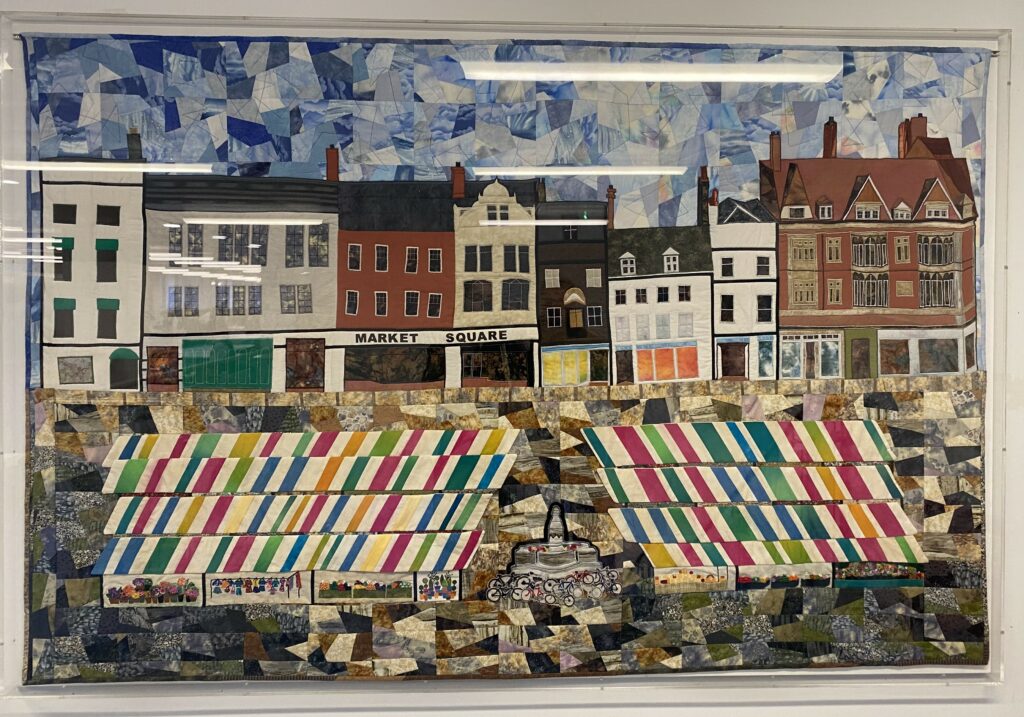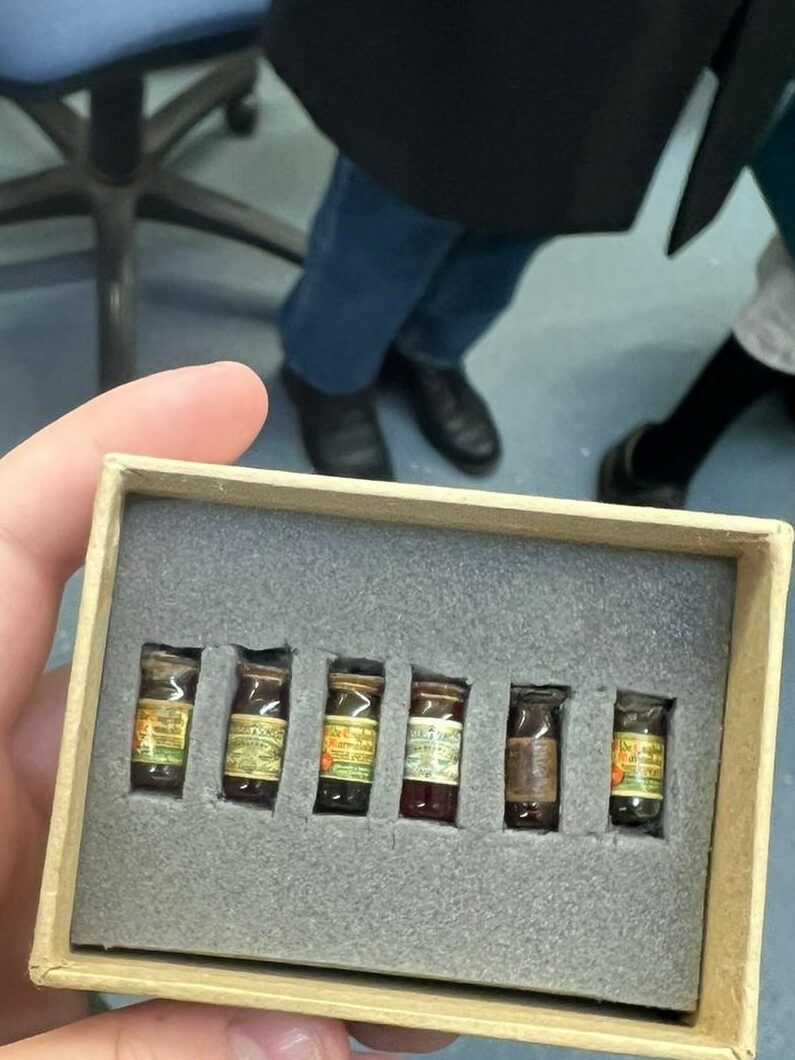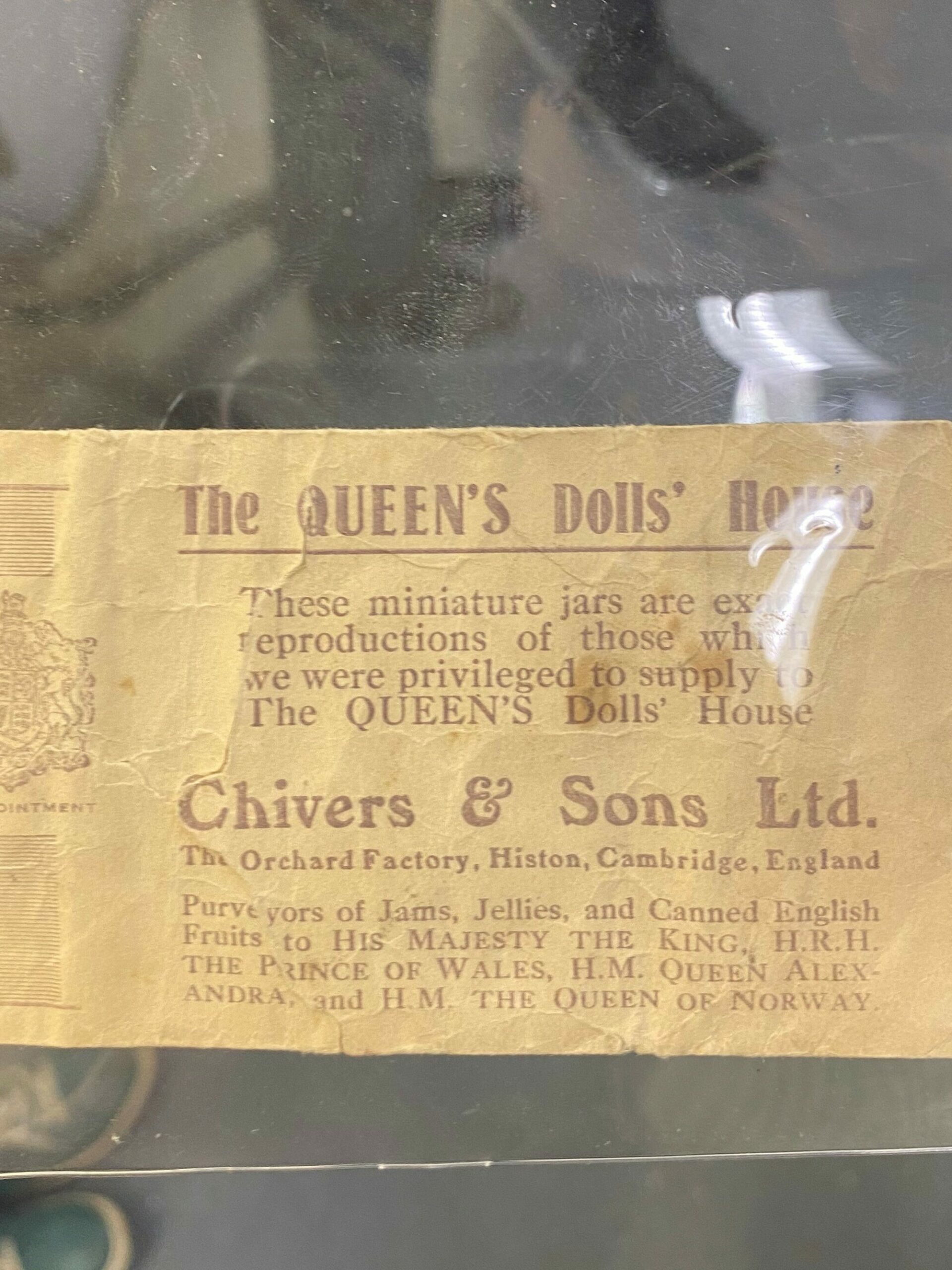The trainees recently visited the Cambridge University Medical Library, situated just outside the city centre in the School of Clinical Medicine, which also forms part of the wider Cambridge Biomedical Campus. The Medical Library’s resources (including study space, borrowable collection, and reference materials) are available not only to Cambridge University’s medical students, but also to use by NHS staff working next door at Addenbrooke’s Hospital. Throughout our visit, we found impressive the ways academic and healthcare librarianship combine to balance the needs of both user groups at the Medical Library.
The visit began with a tour of the library, and the Library Manager described how the library space has developed over the years. The first reading room in the Medical Library is an all-purpose study space, with a range of seating designed to accommodate both individual study and students’ collaborative work. A ‘Quick Picks’ section of frequently borrowed material sits close to the self-issue machines, and is one of the library’s most popular resources. This reading room also houses the Medical Library’s wellbeing and general interest collection of books and DVDs. The Library Manager explained how some of the reading room computers operate on the University system, and the rest connect to the NHS user network.
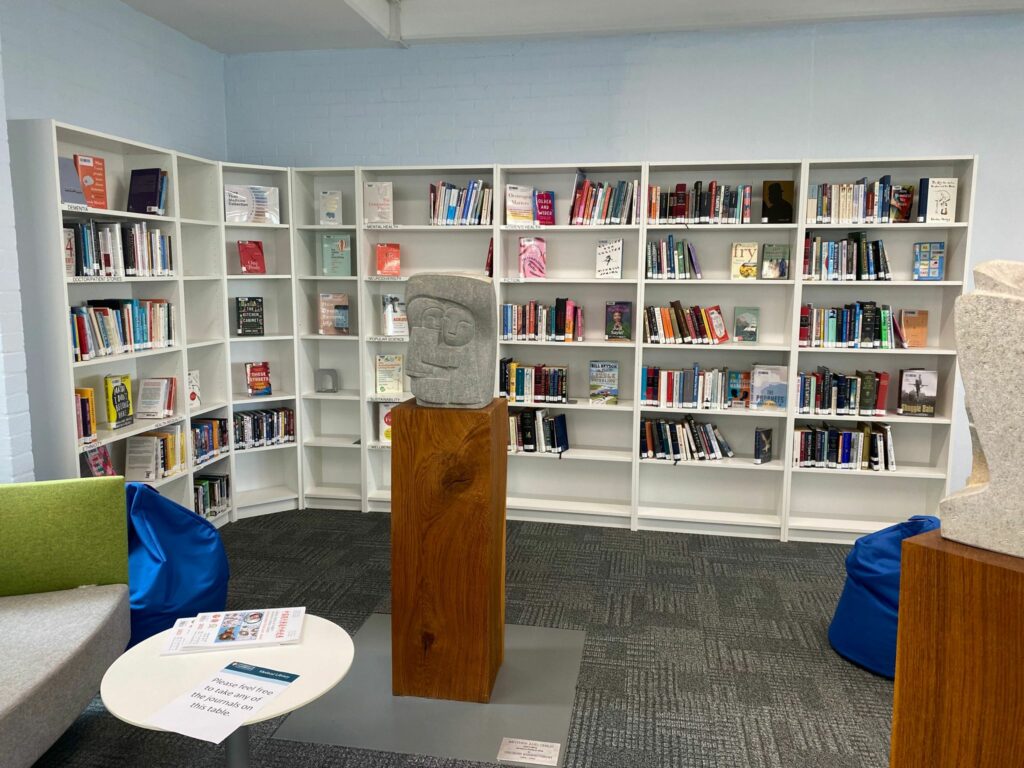
From here, we passed the library’s dedicated silent study space (aptly named the ‘Shhhh’ area), and a classroom equipped for library-run training sessions. The adjoining reading room contains most of the library’s working collection of books, alongside more study space.
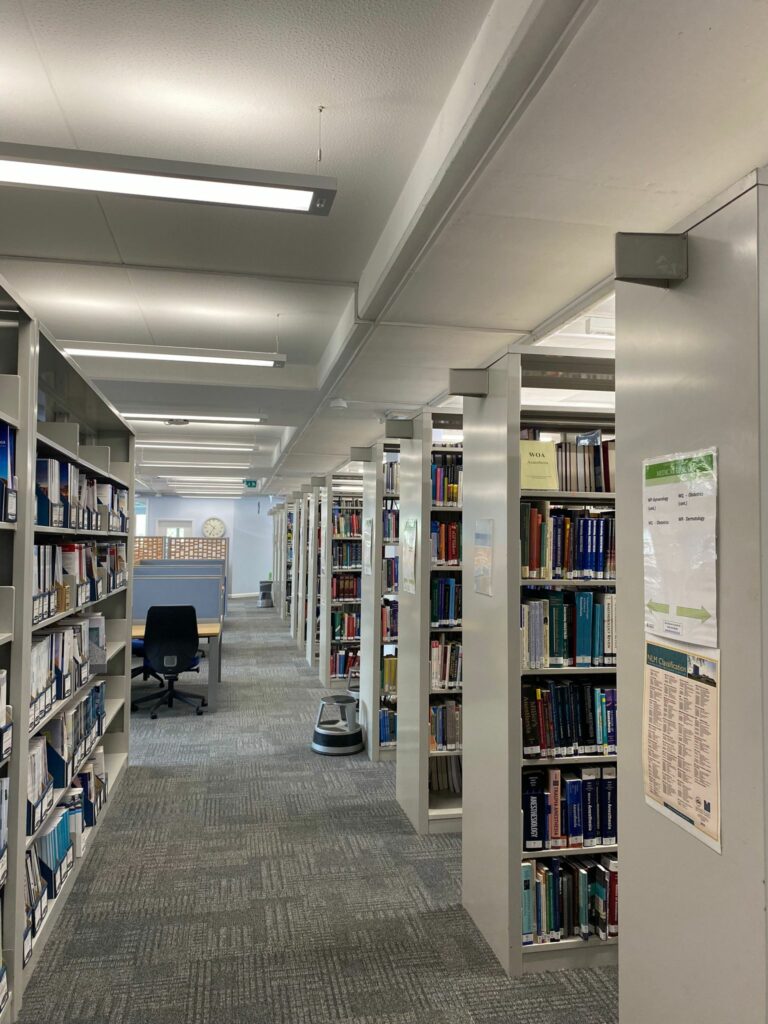
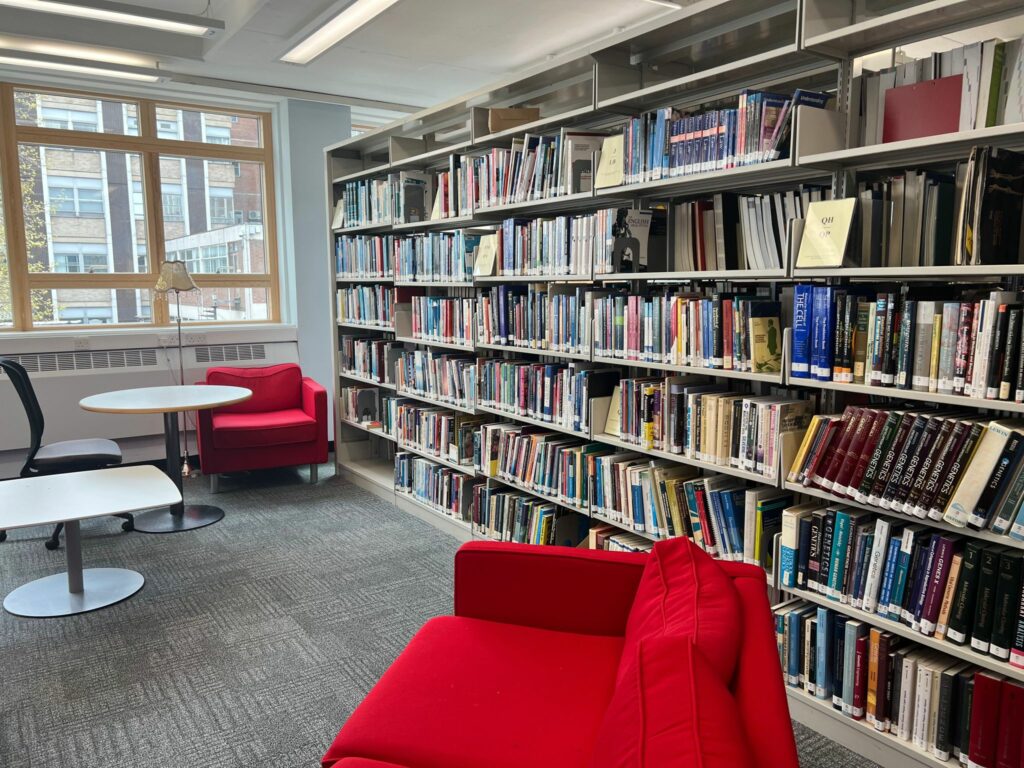
After the tour, we were introduced to the Head of Medical Library Services, and one of the Assistant Librarians. Chatting to the team, we were able to ask questions and learn more about the role of the Medical Library; whilst also observing the time-honoured library tradition of morning tea and biscuits! We found the exciting aspects unique to healthcare librarianship particularly interesting to hear more about, such as assisting medical researchers and doctors with their literature reviews. It was also inspiring to learn that routes into healthcare librarianship are many and various – for instance, a background in medicine is not a prerequisite to becoming a healthcare librarian.
We would like to thank the library team for their warm welcome and fascinating insight into the work of the Medical Library.

